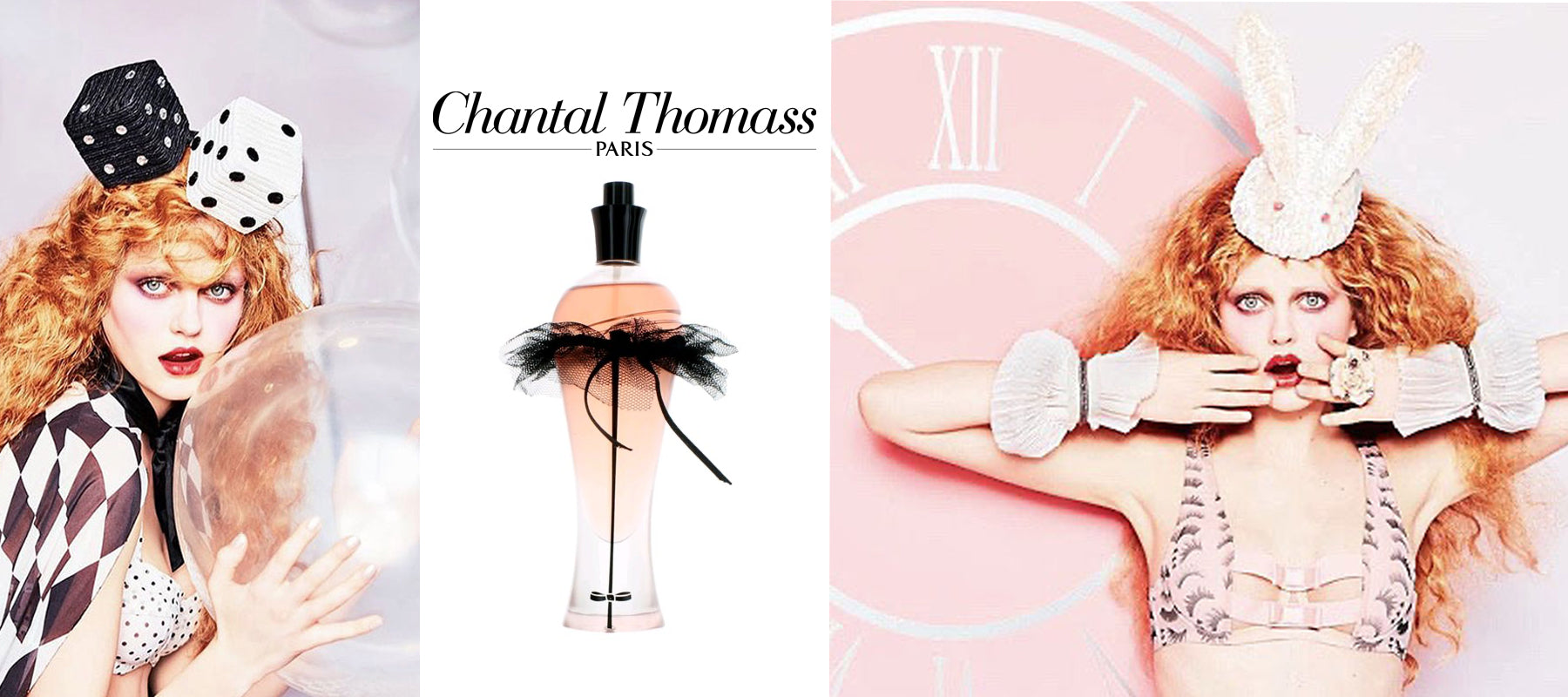Shop now
WITHOUT SHAME
The Chantal Thomass brand is known primarily for its beautiful and sensual lingerie. The brand's perfume bottles, decorated with black lace, also refer to lingerie. Chantal Thomass is a French designer who was the first in the world to dare to draw attention to what had been hidden until then. She made women's lingerie stop being something shameful and become an important part of the wardrobe.
LEADING CAREER Chantal Thomass
Chantal Thomass has earned a reputation for her seductive, flirtatious outfits. Many of her pieces pay titillating homage to exotic lingerie; yet there is never a blatant display of overt sexuality. Instead, there is always a hint of the naughty schoolgirl or a sensual allusion to the charms of the teenage seductress, like Carole Baker in Baby Doll or Sue Lyon in Lolita. The clothes are often form-fitting or skimpy, trimmed with frills, ribbons and flounces, and always made from the most exquisite materials.
Thomass had no formal training in fashion design, but as a child, dressing was enough motivation for her to design her own clothes, which her mother made. She began her fashion career at age 18, designing clothes for girls her own age. A year later, she married Bruce Thomass, who was studying at the École des Beaux Arts in Paris. Together they created a small clothing company called Ter et Bantine, producing and selling young and unusual clothes. They created dresses from hand-painted scarves designed by Bruce and sold them to Dorothée Bis. Thomass also designed dresses with ruffled aprons, school collars and balloon sleeves, which were sold at their first boutique on Boulevard Saint Germain in 1967. Actress and French cultural icon Brigitte Bardot became a regular customer, as did designer Jacqueline Jacobson, who ordered more than a hundred dresses in one season.
The business was successful enough for the pair to establish the Chantal Thomass label in 1975, with Chantal as creative director and Bruce as licensing and sales director. As the company’s profile grew, so did the prices of the clothes, although they retained their youthful, glamorous and strongly feminine style. Thomas was often motivated by her own developments in life. A pregnancy in 1981 led her to develop a maternity line. As her daughter began to grow, Thomass created a children’s clothing division that retained many of the distinctive and theatrical elements of her main collections. The company moved into licensing in 1985, teaming up with the Japanese group World as a financial partner. Licensed products were available throughout Europe and Japan, and included fine leather goods, tights, women’s shoes, eyewear, watches, children’s clothing, scarves, underwear and swimwear. Soon there were a dozen Thomas boutiques in France.
Thomass has maintained her fame by reflecting changes in fashion and adapting her look to the prevailing mood. The youthful style of her clothes has kept her at the forefront of Paris' leading designers. However, the mid- to late-1990s were a turbulent time for Thomass. In 1995, she was fired from her own label, in which she had a minority stake, in a dispute with Japanese majority owner World Company. World planned to continue the label, with aggressive expansion plans and more designs that were considered more commercial than Thomas's usual work. However, the label went bankrupt and liquidated its assets a year later.
In the meantime, Thomass stopped designing lingerie for a while, leaving the category that had become her primary focus. She spent the next four years consulting for companies including Austrian hosiery manufacturer Wolford (where she designed a swimwear line), Victoria's Secret, Antinéas, and Rosy, often in categories outside of lingerie. In late 1998, after settling a lawsuit against World, Thomass reacquired the rights to her name and found a sponsor, the Dim division of Sara Lee, which took two-thirds ownership of her company and assumed production duties for the main lingerie lines. Her first relaunch products were available in 1999. Her return to lingerie design caused controversy when an exhibition at the Galeries Lafayette featuring live models wearing her lingerie sparked protests from feminists and other groups in Paris.
Among the most famous designers in France — a 2001 retrospective of her work at the Musée de Mode in Marseille included 230 pieces — Thomas also has a strong presence in Japan and began breaking into the U.S. market in the late 1990s and early 2000s. Her first trunk show at Saks Fifth Avenue was in April 2001. Licensed lines, distributed primarily in Europe and Japan, include eyewear.
Thomass remains best known for her sexy, comfortable lingerie, often done in black, but sometimes in pastel or white, or with layers of different colors and materials. She often showcases her line to retail buyers using live dioramas of models performing everyday tasks in their lingerie. Women's Wear Daily (February 5, 2001) described her show at the Salon International de la Lingerie as "a naughty peep show with saucy vignettes of boudoir voyeurism." In the future, Thomass planned to expand again into the clothing industry, focusing on lingerie-inspired looks.






